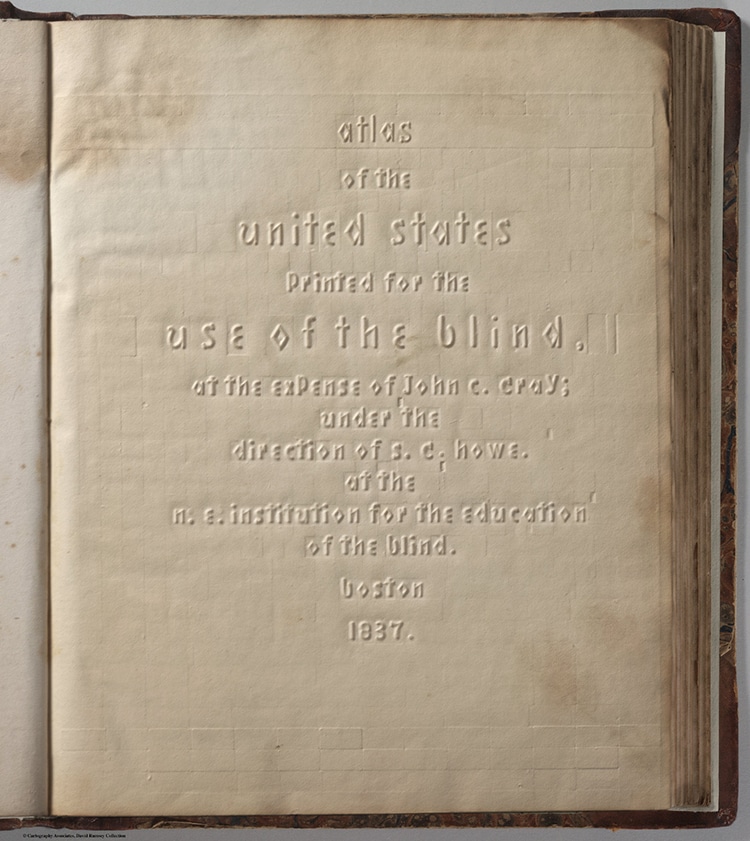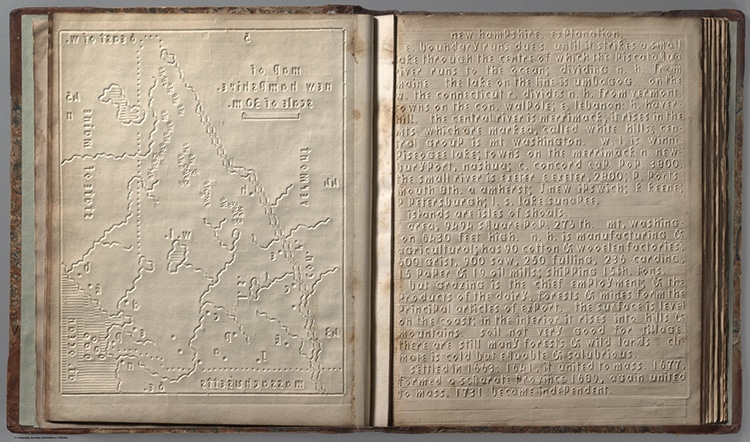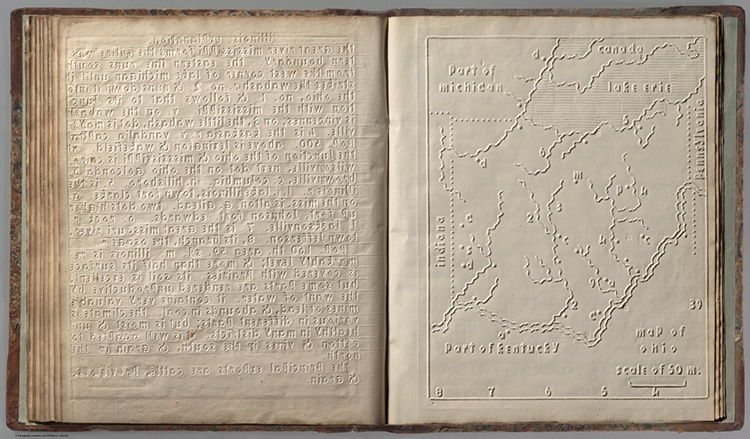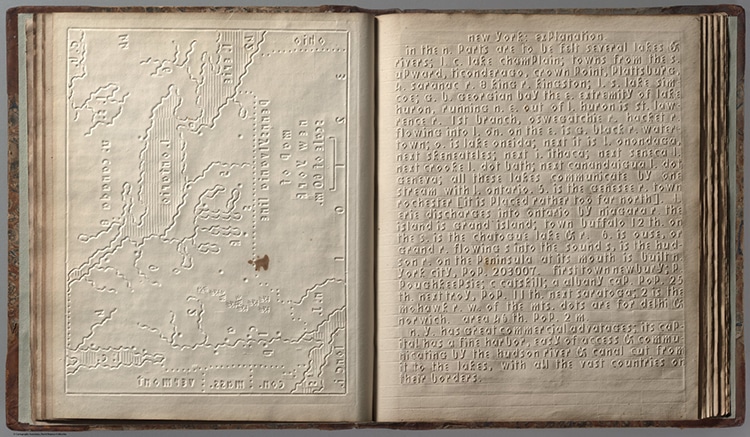
The “Atlas of the United States” created for blind students in 1837. (Photo: David Rumsey Map Collection)
In the early 19th century, most blind children and adults were unable to attend school. Two Bostonians set out to change this. Dr. John Dix Fisher and Dr. Samuel Gridley Howe joined with other reform-minded members of Boston’s upper classes to found what is now The Perkins School for the Blind. Originally called the New England Institution for Education of the Blind, the school became the center of works produced in an innovative embossed font called Boston Line Type. These works include a remarkable atlas, which would have enabled blind and visually impaired students to explore the changing landscape of 19th-century America with their fingertips.
In the early days of the school, Howe began to develop Boston Line Type as a solution to the textbook problem. He used a printing press the school acquired in 1835, and which was retrofitted for a new style of embossed printing. While braille was developed around the same time in Europe, it would not become popular in the United States for decades. Instead, the students at the school—and then blind and visually impaired Americans elsewhere—had access to textbooks, novels, and more printed in Boston Line Type. This style features the Roman alphabet pressed into the page so that it was raised and tactile. The letters were kept simple and lowercase for ease.
By feeling with one’s fingers, the text could be read—although slowly. While it later became clear that Braille was a faster and easier method to learn, the Boston-style type was revolutionary for accessibility. It remained important throughout the 19th century. Even Charles Dickens had 250 copies of his The Old Curiosity Shop printed for Blind readers in the type. Under Howe’s guidance, the school also produced a fascinating atlas with typed descriptions and uniquely raised maps of the American states as they existed at the time of printing in the early 19th century. The 1837 Atlas of the United States featured raised borders of the land, horizontal “shading” in the water, raised rivers, and triangular mountains.
Fifty copies of this remarkable work were produced, but only four are extant. However, the map is available to explore visually or by downloadable 3D model online. According to “Touch This Page: Making Sense of the Ways We Read,” the Boston Line Type was pivotal for many lives. Harriet Gamage, who was an early Perkins student, praised the maps such as those found in this atlas. She wrote to Howe, “As I am in a great measure indebted to your noble institution for the faculties I may enjoy I will name the branches I am at present imparting. Reading, Spelling, Arithmetic, History, Geography, the maps, such as the seeing use, which I am enabled to explain from a retentive memory, and a reference to my own which are so beautifully embossed.”
This atlas was created for students at the New England Institution for Education of the Blind in Boston Line Type, an embossed printing method that developed around the same time as Braille.

New Hampshire’s pages. (Photo: David Rumsey Map Collection)
The raised maps of all the states which existed in the union in the early 19th century are particularly unique and reflect a changing American landscape.

Welcome to Michigan! (Photo: David Rumsey Map Collection)

New York is featured too. (Photo: David Rumsey Map Collection)
h/t: [Open Culture]
Related Articles:
Shockingly Complete 1,100-Year-Old Hebrew Bible (aka Tanakh) Sells for Over $38 Million
Who Was Ennigaldi-Nanna? Learn About the Woman Who Founded the World’s First Museum
500-Year-Old Manuscript Contains First Recorded Stand-Up Comedy Routine
